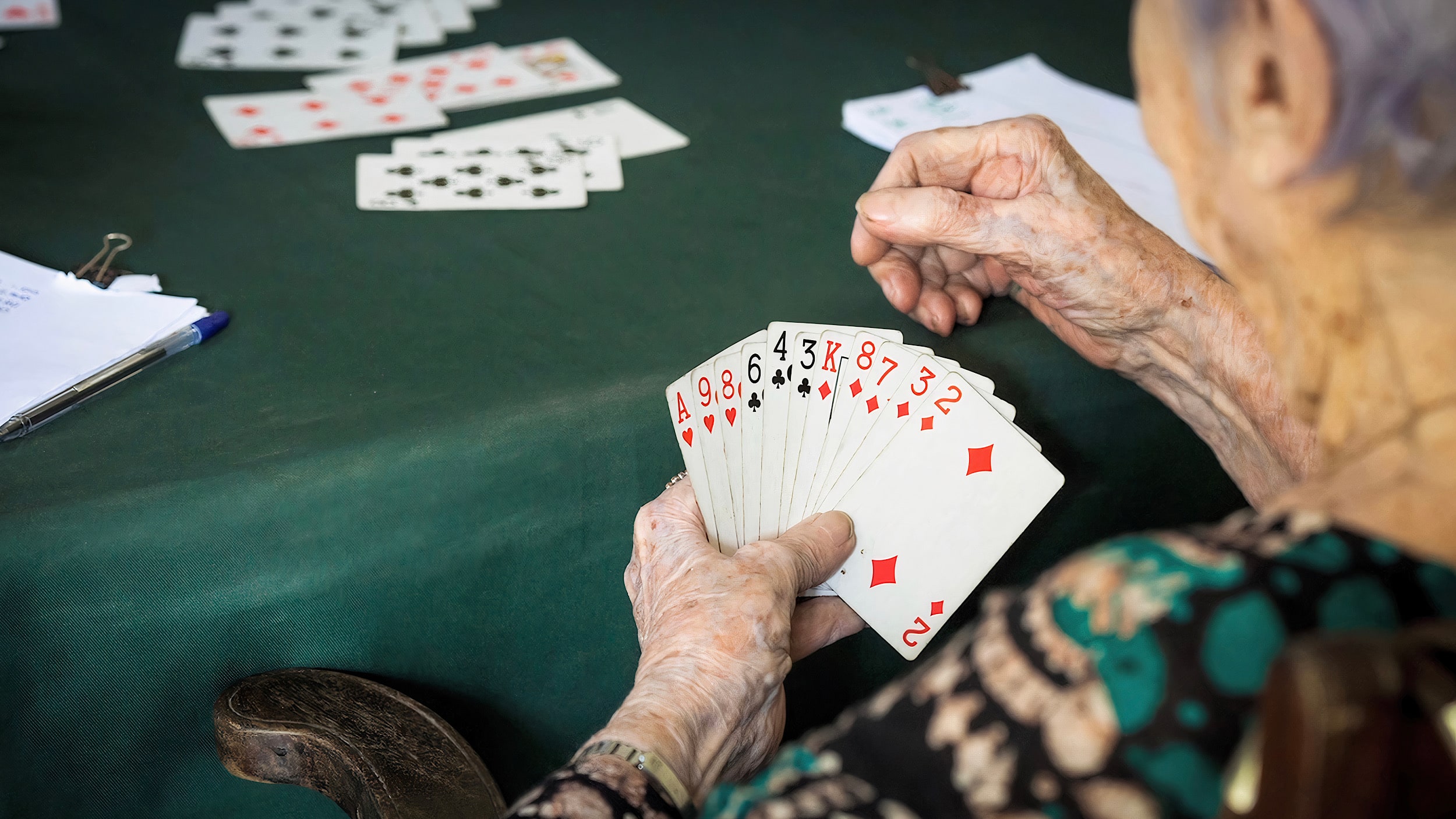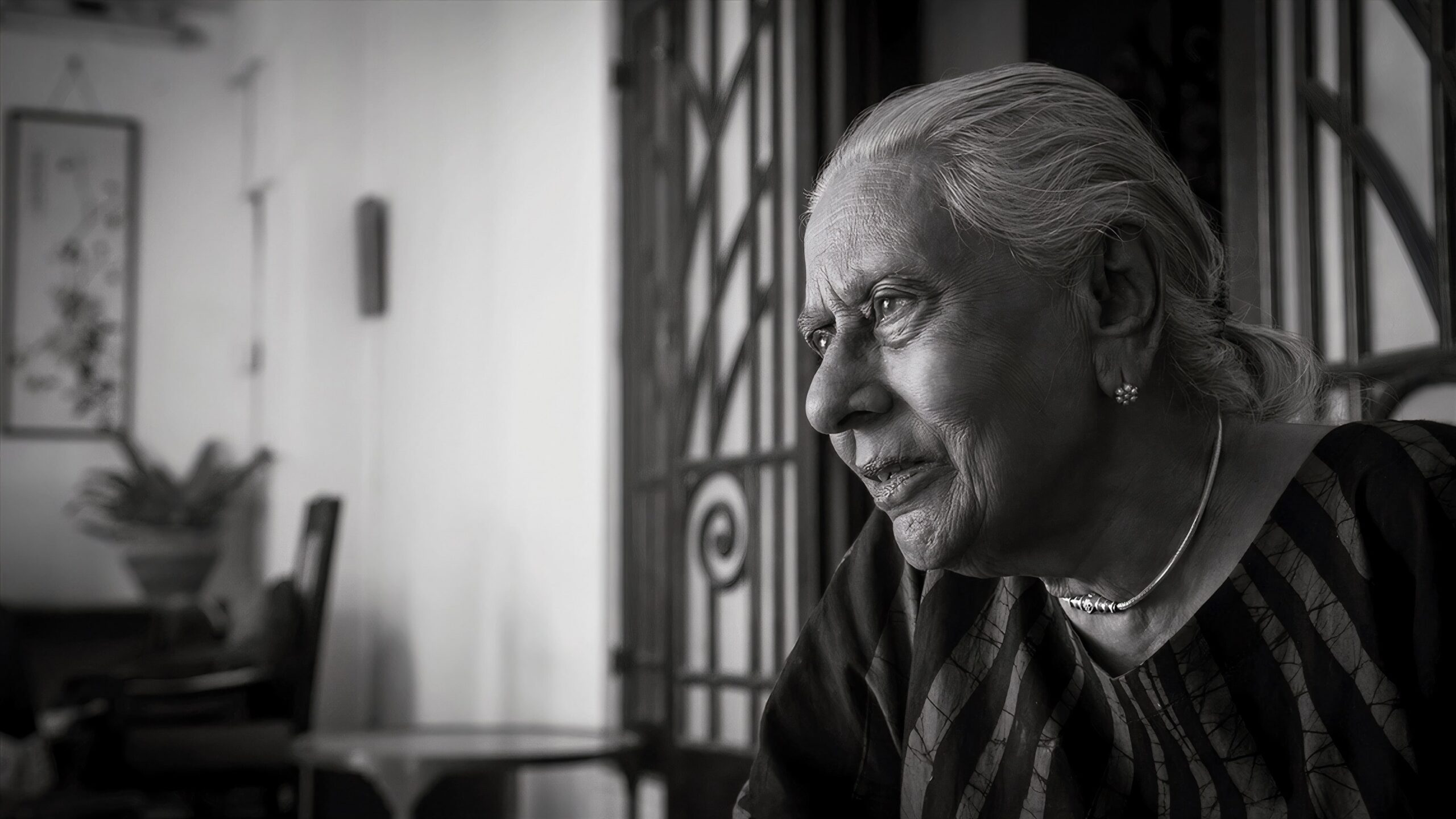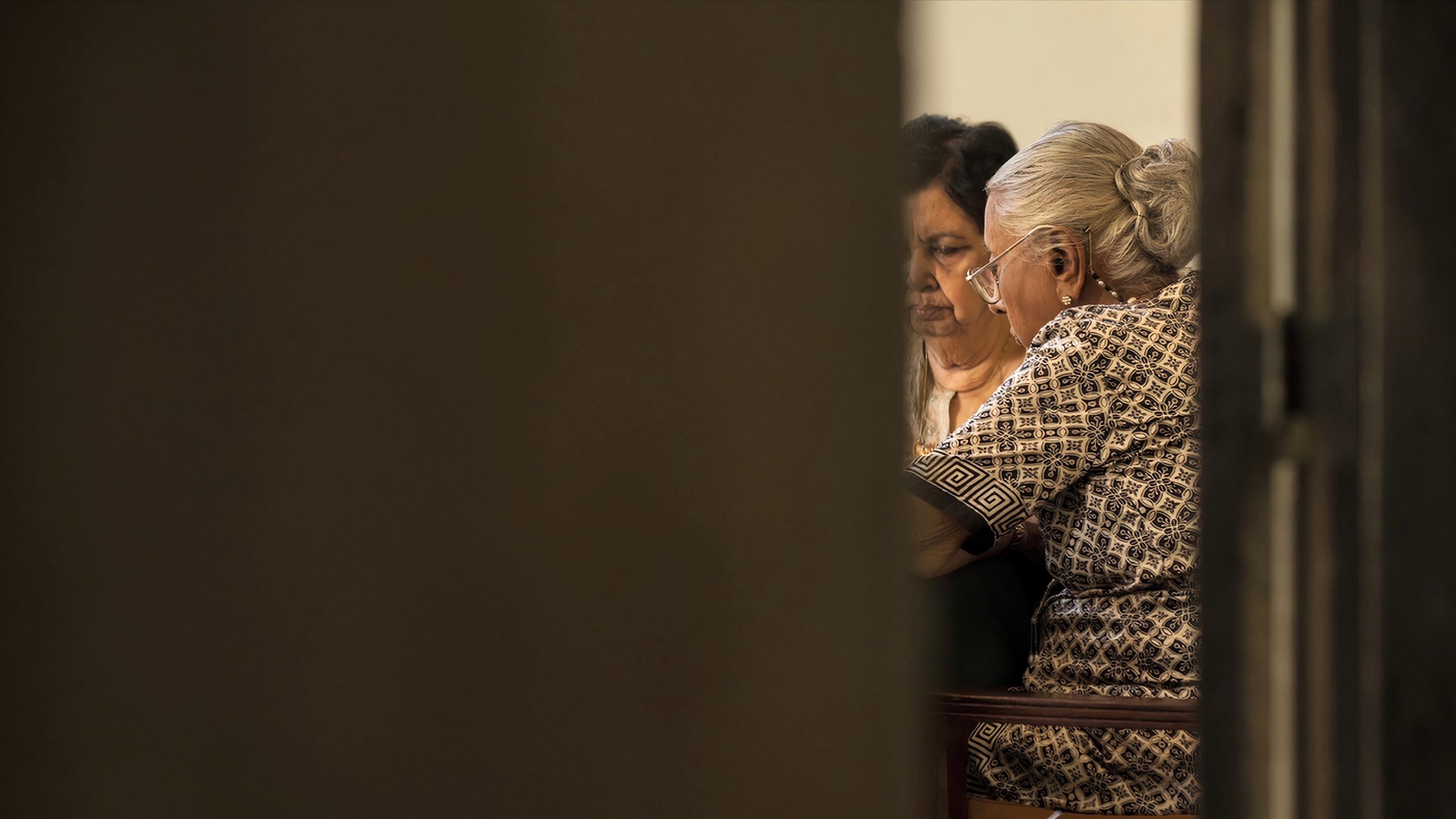The Bridge Player
Sarojini Kadirgamar
Mrs Sarojini Kadirgamar learned to play bridge during the curfews of the 1950s, looking over the shoulders of the adults. She talks about the responsibility of privilege, her Jaffna roots and her personal experiences of the Black July pogrom.


Transcript and translations
Language
Subjects discussed
We’d give as good as we got
“Two down…no, no one down. One down”.
Outstation life in the old days was centred round the club. So tennis and bridge were very much there and very popular. And their friends used to gather in the house for a game of bridge and share potluck with them in a very informal way.
So, looking over their shoulder, I was introduced to bridge. We didn’t get a chance to play much, but still the rudiments of it. Men and women played, but we were young and we hadn’t…didn’t know the game, so we watched and learned.
Then, of course, went to university and occasionally played in university. Then, during the various curfew periods, we gathered together to play bridge.
And since then I’ve been quite hooked on the game. And we have about six of us coming and meeting, usually at my place. And so we have a lot of social life.
The curfew period, the difficult period in Sri Lankan society, started after the ‘50s, where there was satyagrahas and protests and things like that. And the curfew, those curfews would have affected more the people in Wellawatte and those areas.
Frankly, I didn’t feel one bit threatened. But ‘83 did come close to even people like us, because houses in Alfred Place were burning, just round the corner. We had very good Sinhala friends who were prepared to have us in, but I refused to go. And my husband also refused to leave this house.
I could see looters walking around with electric fans, television sets, anything and everything they could lay their hands on. There seemed to be nobody to stop them. And I know that J. R. Jayawardene’s sister was living across the road and I sort of sent a note. “What is happening? Why are no steps being taken?” I got no response.
My mother had about 50 people to feed in Ward Place, ranging from age eighty, over eighty, to babes in arms. Mothers with babes in arms. So she had a much bigger contingent to cope with, mainly concerned with food. “Have you got enough food? Are you all right?” So we managed somehow,
During the ‘83 riots, life was too serious to be playing cards. I mean, I couldn’t be like Nero, fiddling whilst Rome was burning. So at that time we were bothered about feeding and looking after the people who were here.
My husband was a good shot, so he was…he said, “Well, if I go, I take a few people with me”. And I was trying to tell him, “Well, teach me how to handle a gun”. And he laughed and he said, “No, you just send me the cartridges, otherwise you’ll end up by shooting me!” (Laughs). So it was…at least we give as good as we got.





Comments
Leave a comment